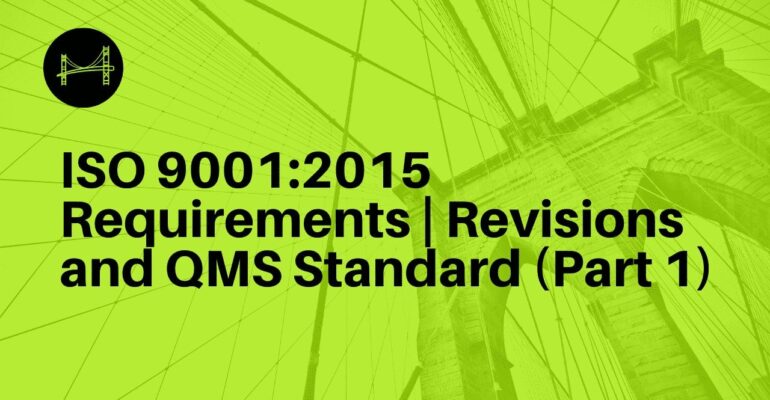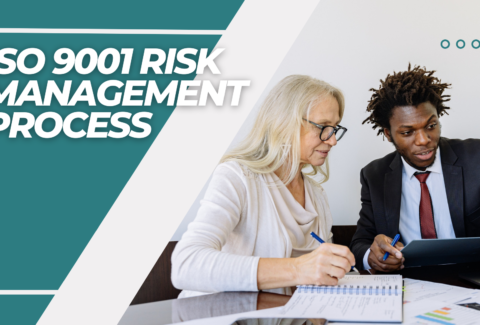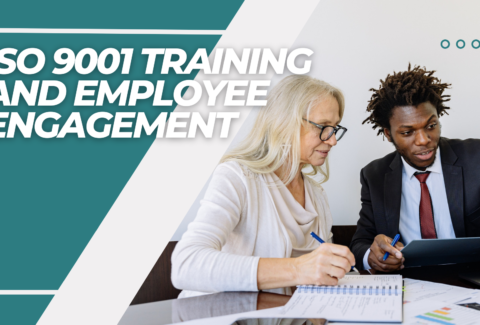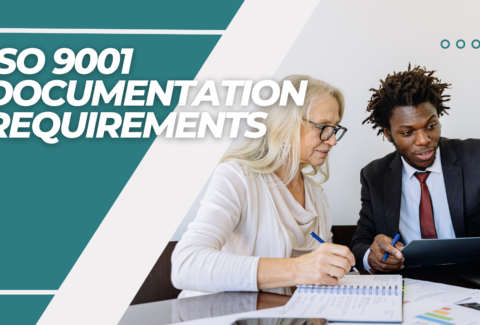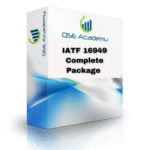ISO 9001 2015 Requirements (Part 1)
ISO 9001 2015 Requirements (Part 1)
Have you ever wondered what makes a business consistently deliver top-notch products and services? It often boils down to having a strong quality management system (QMS) in place, and that’s where ISO 9001 2015 Requirements come into play. These requirements are the backbone of ISO 9001:2015 certification, providing a clear framework for businesses to enhance quality, improve processes, and keep customers happy.
In this series, we’ll break down the ISO 9001 2015 Requirements step by step, starting with the foundational elements. Whether you’re new to ISO 9001 or just looking for a refresher, this guide will help you understand the key principles and how they apply to your business. Trust me—it’s easier than it seems, and by the end of this journey, you’ll have a solid grasp of what it takes to build a successful QMS.
So, grab a cup of coffee, and let’s dive into the first steps of understanding the ISO 9001 2015 Requirements together!
Understanding ISO 9001 2015 Requirements
Before we dive into the nitty-gritty details, let’s take a step back and talk about what makes the ISO 9001 2015 Requirements so important. Think of them as the building blocks for creating a quality management system (QMS) that helps your business deliver consistent results, improve efficiency, and keep customers happy.
If you’ve heard about ISO 9001 before, you might know that it’s the most widely recognized standard for quality management systems. But what makes the 2015 version different, and why should you care? Let’s break it down together.
Why ISO 9001 Matters
At its core, ISO 9001 is all about ensuring quality—whether you’re manufacturing products, providing services, or managing a team. The ISO 9001 2015 Requirements set out a clear framework that helps businesses:
- Streamline their processes.
- Reduce errors and waste.
- Increase customer satisfaction.
And here’s the kicker: it’s not just for large companies. Small businesses can benefit just as much, if not more, by adopting the standard. Whether you’re running a boutique shop or managing a global enterprise, ISO 9001 helps you stay competitive in a crowded marketplace.
What Makes ISO 9001:2015 Different?
The 2015 version of ISO 9001 brought some exciting updates that make the standard more flexible and relevant to today’s business environment. Here are a few key changes to keep in mind:
- Risk-Based Thinking:
Unlike earlier versions, the 2015 requirements emphasize proactive risk management. This means identifying potential issues before they happen and putting systems in place to address them. - Leadership Involvement:
The ISO 9001 2015 Requirements put a strong focus on leadership. Top management is expected to actively engage in the QMS and lead by example, ensuring that quality is a company-wide priority. - Focus on Interested Parties:
The new standard also requires businesses to consider the needs and expectations of interested parties, such as customers, employees, and suppliers. - Simplified Documentation:
Gone are the days of rigid, excessive documentation. The 2015 version allows for more flexibility, encouraging businesses to focus on what’s relevant and practical.
Example:
Let’s say you’re a logistics company. Under the updated requirements, you’ll not only need to focus on timely deliveries (customer needs) but also consider risks like supply chain disruptions or regulatory changes.
Why Understanding These Changes Matters
By aligning your QMS with the ISO 9001 2015 Requirements, you’re not just ticking boxes for certification—you’re building a foundation for continuous improvement. The updates in the 2015 version make the standard more adaptable and valuable for businesses of all shapes and sizes.
In the next section, we’ll start breaking down the specific clauses of ISO 9001:2015, starting with the context of the organization. Don’t worry—it’s not as complex as it sounds, and I’ll guide you every step of the way. Let’s keep going!
Context of the Organization (Clause 4)
When it comes to ISO 9001 2015 Requirements, everything starts with understanding the context of your organization. Think of it as getting to know the big picture of your business—what you do, who you serve, and the factors that influence your success. This clause lays the foundation for your quality management system (QMS) and helps you align it with your unique business environment.
Let’s break this down step by step so it feels less like jargon and more like something you can put into action.
Understanding the Business Context
The first step in meeting the ISO 9001 2015 Requirements is to identify the internal and external factors that impact your organization. These could be anything from market trends and customer expectations to your company’s culture and resources.
Why It’s Important:
- It helps you see how your QMS fits into the bigger picture.
- You can proactively address challenges and seize opportunities.
Example:
A small tech startup might recognize that rapid industry changes (external factor) and a lack of skilled staff (internal factor) could affect their ability to deliver quality software. By identifying these factors early, they can adapt their QMS to address these challenges.
Identifying Interested Parties
One of the key updates in the ISO 9001 2015 Requirements is the emphasis on identifying and understanding your interested parties. These are the people or groups that affect—or are affected by—your business operations.
Steps to Identify Interested Parties:
- List all the stakeholders connected to your business (e.g., customers, employees, suppliers, regulators).
- Determine their needs and expectations.
- Prioritize the most critical stakeholders for your QMS.
Example:
For a food manufacturing company, interested parties might include customers who expect safe and tasty products, suppliers who need timely payments, and regulators who require compliance with food safety laws.
Defining the Scope of the QMS
Once you understand the business context and your interested parties, the next step is defining the scope of your QMS. This means clearly outlining what your QMS will cover, such as specific products, services, or locations.
Why Scope Matters:
- It ensures that your QMS is focused and relevant to your business.
- It provides clarity for employees and stakeholders.
Example:
A logistics company might define their QMS scope as covering transportation and warehousing services within a specific region, while excluding international shipping services that are outsourced.
How to Get Started
If this feels like a lot, don’t worry—you don’t need to have all the answers at once. Start small by listing your internal and external factors, brainstorming your interested parties, and drafting a basic scope for your QMS. As you gather more insights, you can refine and improve.
In the next section, we’ll dive into the role of leadership in meeting the ISO 9001 2015 Requirements. Spoiler alert: it’s not just about setting policies—it’s about active involvement and leading by example. Let’s keep going!
Leadership (Clause 5)
When it comes to the ISO 9001 2015 Requirements, leadership plays a starring role. Gone are the days when management could simply delegate quality responsibilities to a team and call it a day. The 2015 standard makes it clear: top management must be actively involved in driving the quality management system (QMS) and setting the tone for the entire organization.
Let’s talk about what this means and how leaders can take charge to meet ISO 9001 standards without feeling overwhelmed.
Leadership Commitment
One of the core principles of the ISO 9001 2015 Requirements is that quality starts at the top. Leadership commitment means that top management—whether it’s the CEO of a multinational corporation or the owner of a small business—must take responsibility for the effectiveness of the QMS.
What This Looks Like in Action:
- Setting clear quality objectives and aligning them with the organization’s goals.
- Actively participating in QMS activities, such as reviews and audits.
- Promoting a culture where quality is a shared responsibility, not just a task for one department.
Example:
In a small retail business, the owner might regularly review sales processes and personally engage with customer feedback to identify areas for improvement. This hands-on approach reinforces the importance of quality to the team.
Developing and Communicating a Quality Policy
A quality policy is more than just a statement on a piece of paper—it’s the foundation of your QMS and a reflection of your organization’s commitment to quality. According to the ISO 9001 2015 Requirements, leadership is responsible for developing, maintaining, and communicating this policy throughout the organization.
Key Elements of a Quality Policy:
- It should align with your organization’s purpose and goals.
- It must include a commitment to meeting customer and regulatory requirements.
- It should promote continuous improvement.
Example:
A manufacturing company’s quality policy might state: “We are committed to producing high-quality, sustainable products that meet customer expectations while continuously improving our processes.”
Once created, leaders must ensure that everyone in the organization understands and applies the policy in their day-to-day activities.
Assigning Roles and Responsibilities
Another important aspect of leadership under the ISO 9001 2015 Requirements is ensuring that roles and responsibilities related to the QMS are clearly defined and understood. This helps avoid confusion and ensures accountability at all levels.
How to Get It Right:
- Identify key roles within the QMS, such as quality managers or process owners.
- Clearly communicate who is responsible for what, whether it’s conducting audits, reviewing performance, or implementing corrective actions.
- Provide the necessary resources and training to empower employees to fulfill their roles effectively.
Example:
In a healthcare clinic, the clinic manager might be responsible for overseeing quality objectives, while department heads take charge of tracking and improving specific processes like patient check-ins or billing accuracy.
Why Leadership Matters
Leadership is at the heart of the ISO 9001 2015 Requirements because it sets the tone for how seriously quality is taken across the organization. When leaders lead by example, employees are more likely to follow suit, creating a culture where quality becomes second nature.
In the next section, we’ll explore the planning requirements outlined in ISO 9001:2015, including how to address risks and opportunities while setting actionable quality objectives. Let’s keep the momentum going!
Planning (Clause 6)
Now that we’ve covered leadership, let’s move on to the next big piece of the ISO 9001 2015 Requirements puzzle: planning. Planning is where the groundwork is laid to ensure your quality management system (QMS) is not only effective but also prepared to adapt to changes and challenges. This part of the standard emphasizes being proactive—thinking ahead about risks, opportunities, and how to achieve your quality goals.
Let’s unpack what this means in practical terms and how you can tackle planning step by step.
Addressing Risks and Opportunities
One of the standout updates in the ISO 9001 2015 Requirements is the focus on risk-based thinking. Gone are the days of waiting for problems to arise before fixing them. Instead, the standard encourages businesses to identify risks and opportunities upfront and plan how to address them.
How to Approach This:
- Identify Risks and Opportunities: Look at internal and external factors that could impact your QMS.
- Assess Their Impact: Consider how each risk or opportunity might affect your processes or outcomes.
- Plan Actions: Develop strategies to mitigate risks or take advantage of opportunities.
Example:
A logistics company might identify the risk of delivery delays due to weather conditions. To address this, they plan alternate routes and invest in tracking technology to keep customers informed.
Setting Quality Objectives
Quality objectives are like the roadmap for your QMS—they give your team clear, measurable goals to work toward. According to the ISO 9001 2015 Requirements, these objectives should align with your quality policy and be actionable.
Tips for Setting Effective Objectives:
- Make them SMART: Specific, Measurable, Achievable, Relevant, and Time-bound.
- Focus on areas that drive improvement, like customer satisfaction, process efficiency, or compliance.
- Regularly review progress and adjust objectives as needed.
Example:
A small bakery might set a quality objective to “reduce customer complaints about order accuracy by 20% within six months” and monitor progress through feedback forms and audits.
Planning for Changes
Change is inevitable, whether it’s a new product launch, a shift in customer expectations, or a regulatory update. The ISO 9001 2015 Requirements emphasize the importance of planning for change to ensure your QMS stays effective and relevant.
How to Plan for Change:
- Assess the Impact: Consider how changes might affect your processes, resources, or stakeholders.
- Involve Your Team: Collaborate with employees and key stakeholders to create a clear action plan.
- Monitor Implementation: Track the success of changes and adjust as necessary.
Example:
When a tech company launches a new app feature, they might plan for changes by training their support team, updating documentation, and gathering customer feedback post-launch.
Why Planning Matters
Planning is the bridge between understanding your organization (Clause 4) and executing your QMS effectively. By addressing risks, setting quality objectives, and planning for changes, you create a proactive and flexible system that can adapt to whatever comes your way.
In the next section, we’ll explore practical tips for implementing the ISO 9001 2015 Requirements, so you can take all this theory and put it into action. Ready to make this work for your business? Let’s keep going!
Implementation Tips for ISO 9001 2015 Requirements
Now that we’ve covered the foundational elements of the ISO 9001 2015 Requirements, you might be wondering, “How do I actually put all of this into action?” Don’t worry—it’s not as daunting as it sounds. Implementing these requirements is about taking consistent, manageable steps to build a quality management system (QMS) that works for your business.
Let’s explore some practical tips to make implementing the ISO 9001 2015 Requirements smooth and stress-free.
1. Start with a Gap Analysis
A gap analysis is like a roadmap that shows you where your business stands compared to the ISO 9001 2015 Requirements. It helps you pinpoint the areas that need improvement so you can focus your efforts effectively.
How to Conduct a Gap Analysis:
- Review each clause of the ISO 9001:2015 standard and compare it to your current processes.
- Identify any missing elements or areas where you don’t fully meet the requirements.
- Prioritize which gaps to address first based on their impact on your QMS.
Example:
A small IT company might discover through a gap analysis that they lack formal documentation for their incident response process. Addressing this gap becomes their starting point.
2. Involve Your Team
The success of your QMS depends on collaboration. Involving your team not only lightens the workload but also ensures everyone is on the same page and committed to meeting the ISO 9001 2015 Requirements.
How to Get Your Team Involved:
- Hold training sessions to explain the importance of ISO 9001 and how it benefits the organization.
- Assign specific roles and responsibilities for implementing different parts of the QMS.
- Encourage open communication and feedback to identify practical ways to meet requirements.
Example:
In a manufacturing plant, the quality manager might involve production line workers in identifying inefficiencies and brainstorming solutions to improve product consistency.
3. Keep Documentation Simple and Relevant
Documentation is a critical part of the ISO 9001 2015 Requirements, but it doesn’t need to be overwhelming. Focus on creating documents that are clear, concise, and easy for your team to use.
Tips for Simplifying Documentation:
- Use templates or software tools to standardize your documents.
- Avoid overloading documents with unnecessary details—stick to what’s essential.
- Regularly review and update documents to keep them accurate and relevant.
Example:
A logistics company might use a simple checklist to document vehicle inspections, ensuring drivers can quickly complete and record their checks before hitting the road.
4. Leverage Technology
Technology can be a game-changer when implementing the ISO 9001 2015 Requirements. From tracking performance metrics to managing documents, the right tools make the process more efficient.
Ways Technology Can Help:
- Quality management software can centralize your documentation and streamline audits.
- Data analytics tools help you monitor key performance indicators (KPIs) in real time.
- Online training platforms ensure employees stay up to date on QMS requirements.
Example:
A healthcare provider might use quality management software to track compliance with patient care standards, reducing the time spent on manual record-keeping.
5. Focus on Continuous Improvement
ISO 9001:2015 isn’t just about setting up a system—it’s about constantly improving it. Make continuous improvement a part of your company culture by regularly evaluating your QMS and looking for ways to do better.
How to Foster Continuous Improvement:
- Conduct regular internal audits to identify areas for growth.
- Use customer feedback and performance data to drive improvements.
- Celebrate small wins to keep your team motivated and engaged.
Example:
An e-commerce business might review customer complaints quarterly, using the data to improve their shipping process and reduce delivery delays.
Why These Tips Matter
Implementing the ISO 9001 2015 Requirements doesn’t have to be a complicated process. By breaking it down into smaller steps, involving your team, and using the right tools, you can build a QMS that not only meets the standard but also drives meaningful improvements in your business.
In the final section, we’ll wrap up this guide with key takeaways and next steps for tackling the ISO 9001 journey. Let’s finish strong!
Conclusion: Laying the Foundation for Success with ISO 9001 2015 Requirements
Congratulations! You’ve just taken a deep dive into the fundamentals of the ISO 9001 2015 Requirements, and you’re now one step closer to building a quality management system (QMS) that works for your business. By understanding and implementing these requirements, you’re not just pursuing certification—you’re setting your business up for long-term success.
Key Takeaways
Let’s quickly recap what we’ve covered so far:
- The ISO 9001 2015 Requirements focus on creating a flexible, effective QMS that’s built around your organization’s unique context, risks, and goals.
- Leadership plays a crucial role in driving the QMS by demonstrating commitment, developing a quality policy, and assigning clear roles and responsibilities.
- Planning is the backbone of a strong QMS. By addressing risks and opportunities, setting clear quality objectives, and planning for changes, you ensure your system is proactive and resilient.
- Implementing these requirements doesn’t have to be overwhelming. Starting with a gap analysis, involving your team, and leveraging technology are practical ways to make the process manageable.
Why ISO 9001 2015 Requirements Matter
At its core, the ISO 9001 2015 Requirements are about more than just compliance—they’re about creating a culture of quality that drives continuous improvement and builds trust with your customers, employees, and stakeholders.
For example, a small manufacturing company that follows these requirements isn’t just ticking boxes for an audit. They’re improving efficiency, reducing errors, and delivering a better product to their customers. That’s the real power of ISO 9001.
Next Steps for Your ISO 9001 Journey
So, what’s next? Here are a few simple steps to keep the momentum going:
- Review Your Current Processes: Take stock of where your organization stands in relation to the requirements we’ve discussed.
- Start Small: Focus on one area at a time, like identifying risks or developing a quality policy.
- Seek Support: Whether it’s training your team, using templates, or consulting with an expert, don’t hesitate to get the help you need.
- Commit to Improvement: Remember, ISO 9001 isn’t about being perfect—it’s about getting better every day.
Final Thoughts
The ISO 9001 2015 Requirements may seem like a lot to take in at first, but with the right approach, you can turn them into a valuable tool for your business. From improving processes to building stronger relationships with customers and stakeholders, the benefits far outweigh the effort.
Stay tuned for Part 2, where we’ll dive deeper into the next set of ISO 9001 clauses and explore how they bring even more value to your QMS. In the meantime, take it one step at a time—you’re already on the right track! Let’s keep building together.
Looking for More Resources on ISO 9001?
Looking for ISO 9001 Resources Tailored to Your Industry?
If this article helped clarify ISO 9001, take the next step with our industry-focused tools designed to simplify your certification journey:
📦 ISO 9001 Documentation Kits by Industry: Whether you’re in manufacturing, construction, consulting, or healthcare — we have complete, ready-to-use documentation tailored for your sector.
🎓 Online ISO 9001 Training: Learn how to implement ISO 9001 effectively with our easy-to-follow video lessons, real-world examples, and practical exercises.
📋 ISO 9001 Checklist: Download our step-by-step checklist to ensure your QMS meets all the 9001:2015 requirements from start to finish.
These resources are crafted to save you time, reduce stress, and help you achieve certification with confidence. Choose your industry and start now!

make ISO standards less intimidating and more approachable for everyone.
Whether it’s ISO 9001, ISO 22000, or the cosmetics-focused ISO 22716,
I’ve spent my career turning complex jargon into clear, actionable steps
that businesses can actually use. I’m not here to call myself an expert—I prefer “enthusiast” because I truly love what I do.
There’s something incredibly rewarding about helping people navigate food safety and quality management systems
in a way that feels simple, practical, and even enjoyable.
When I’m not writing about standards, you’ll probably find me playing Piano 🎹, connecting with people, or diving into my next big project💫.
- I’m an engineer specialized in the food and agricultural industry
- I have a Master’s in QHSE management and over 12 years of experience as a Quality Manager
- I’ve helped more than 15 companies implement ISO 9001, ISO 22000, ISO 22716, GMP, and other standards
- My clients include food producers, cosmetics manufacturers, laboratories, and service companies
- I believe quality systems should be simple, useful, and efficient
- Outside of work, I play piano and love learning something new every day
Let’s make ISO less about stress and more about success! 🙏

